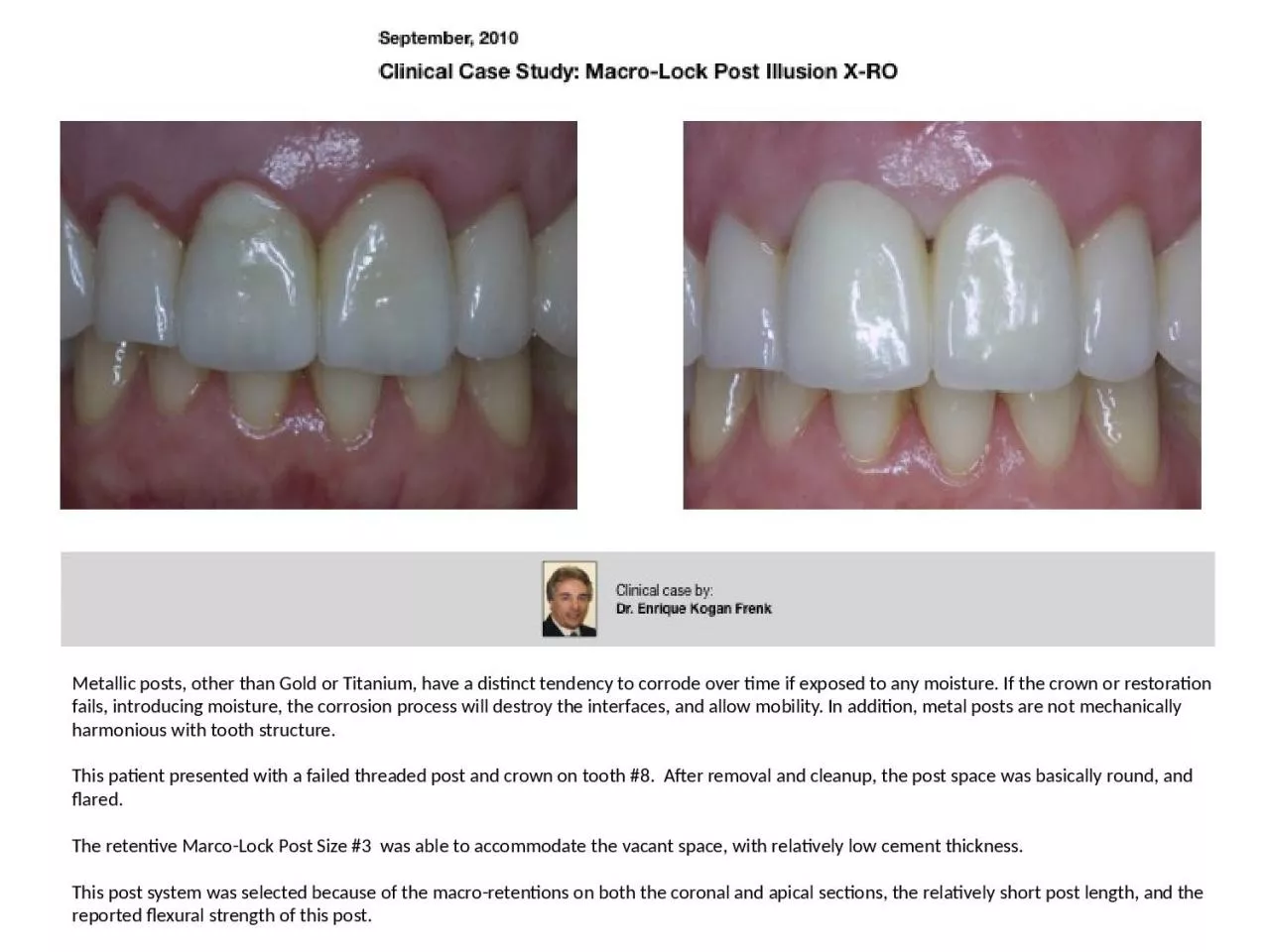

This patient presented with a failed threaded post and crown on tooth 8 After removal and cleanup the post space was basically round and flared The retentive MarcoLock Post Size 3 was able to accommodate the vacant space with relatively low cement thickness ID: 1037259
Download Presentation The PPT/PDF document "Metallic posts, other than Gold or Titan..." is the property of its rightful owner. Permission is granted to download and print the materials on this web site for personal, non-commercial use only, and to display it on your personal computer provided you do not modify the materials and that you retain all copyright notices contained in the materials. By downloading content from our website, you accept the terms of this agreement.
1. Metallic posts, other than Gold or Titanium, have a distinct tendency to corrode over time if exposed to any moisture. If the crown or restoration fails, introducing moisture, the corrosion process will destroy the interfaces, and allow mobility. In addition, metal posts are not mechanically harmonious with tooth structure.This patient presented with a failed threaded post and crown on tooth #8. After removal and cleanup, the post space was basically round, and flared.The retentive Marco-Lock Post Size #3 was able to accommodate the vacant space, with relatively low cement thickness. This post system was selected because of the macro-retentions on both the coronal and apical sections, the relatively short post length, and the reported flexural strength of this post.
2. 1. Remove the failed restoration and post, Clean debris, confirm an apical seal.2. Isolate and remove any necessary gutta percha, using the provided Starter Drills.3. Prepare the post space using the consecutively larger Finishing Drills provided.4. Try-in the post, to confirm an apical fit, trim excess length. Clean with alcohol.5. Etch, rinse and remove excess water.6. Apply adhesive bonding agent on tooth. Remove excess. Air-dry, light-cure.
3. 7. Apply adhesive bonding agent on post.8. Air-dry, light-cure.9. Inject or apply the dual-cure resin cement.10. IMMEDIATELY insert the post. Light-cure to stabilize the posts.11. Apply additional core material, and light-cure thoroughly.12. Finished core build-ups on #8 & #9.
4. The right maxillary central required replacement of a metallic post, while replacement of the crown on the left central did not. This post system has the correct (0.04) taper to approximate the existing root canal, and a good selection of diameters, to adequately fill the space, and provide retention, even with only 5-6mm insertion depth. Most of the retentive section of the coronal part was removed pre-insertion, but the surface on the remaining “neck” , the thickest part of the post, is also highly micro-retentive.Products used in this case:RTD Macro-Lock Post, Illusion X-RO Size #3 (of 6)Bisco One-step Adhesive (5th Generation)Dual-cure resin cementCore build-up compositeAffiliations:Private practice, Mexico City, MexicoAdjunct Professor; Villa Nova University, Ft Lauderdale, Florida, USA